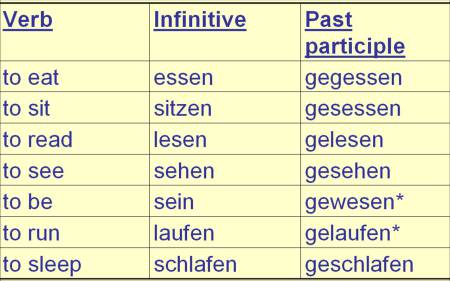Past Tense
Past tense can be easy, but it can be tricky at the same time.There are specific rules to creating past tense, but they don't apply to all of the verbs in the German language.
Most of the time, you take the verb that you want to change, add "ge-" to the front and keep the "-en" ending
Example:
To sleep = schlafen
Past Tense: geschlafen
However, there are some verbs where you add "-t" on the end instead of "-en"
Example:
To play = spielen
Past Tense: gespielt
Sometimes, there are verbs that don't start with "ge-" and end with "-t"
Example:
To visit = besuchen
Past Tense: besucht
There really is no way to determine what verbs follow what rules. It comes down to just knowing it or having a reference sheet.

This is a really good English to German/German to English dictionary website where you can find out what verbs require what change.
When using past tense verbs in a sentence, you must have a helping verb in the second position while the past tense one goes to the end.
The helping verbs for past tense are haben(to have) and sein(to be). For conjugation rules, click here.
Example:
I ate an apple.
Ich habe einen Apfel gegessen.
You use sein, when the person or object is moving from one place to another. EX: to go = gegangen.
You use haben, when the person or object is not moving from one place to another. EX: to give = gegeben.
SOURCE: http://www.nthuleen.com/teach/grammar/perfektexpl.html